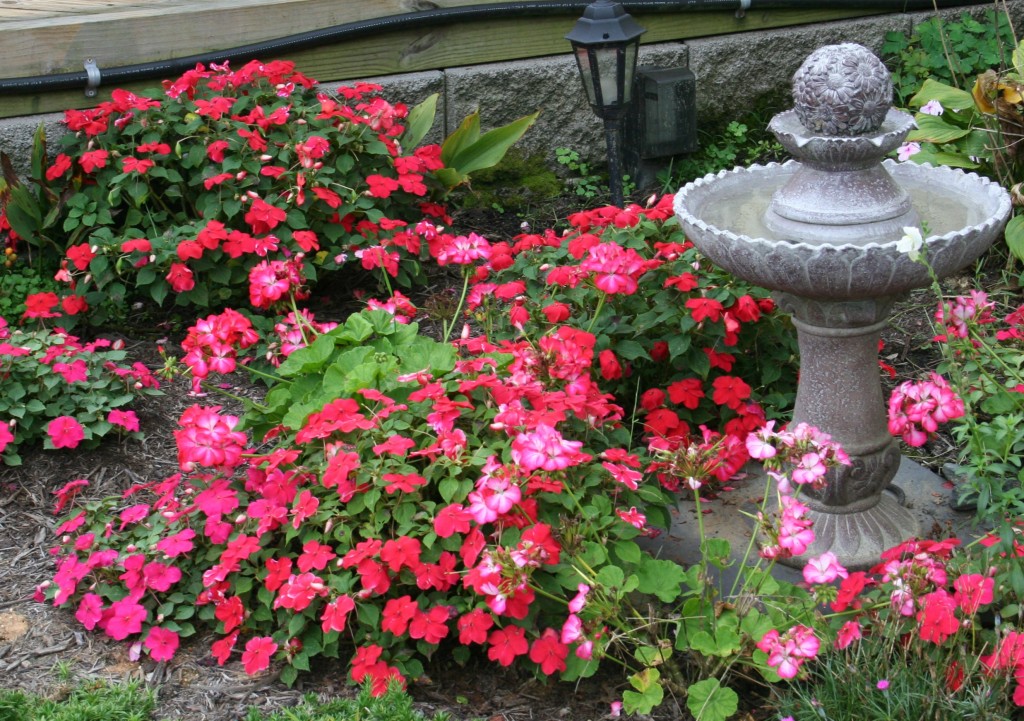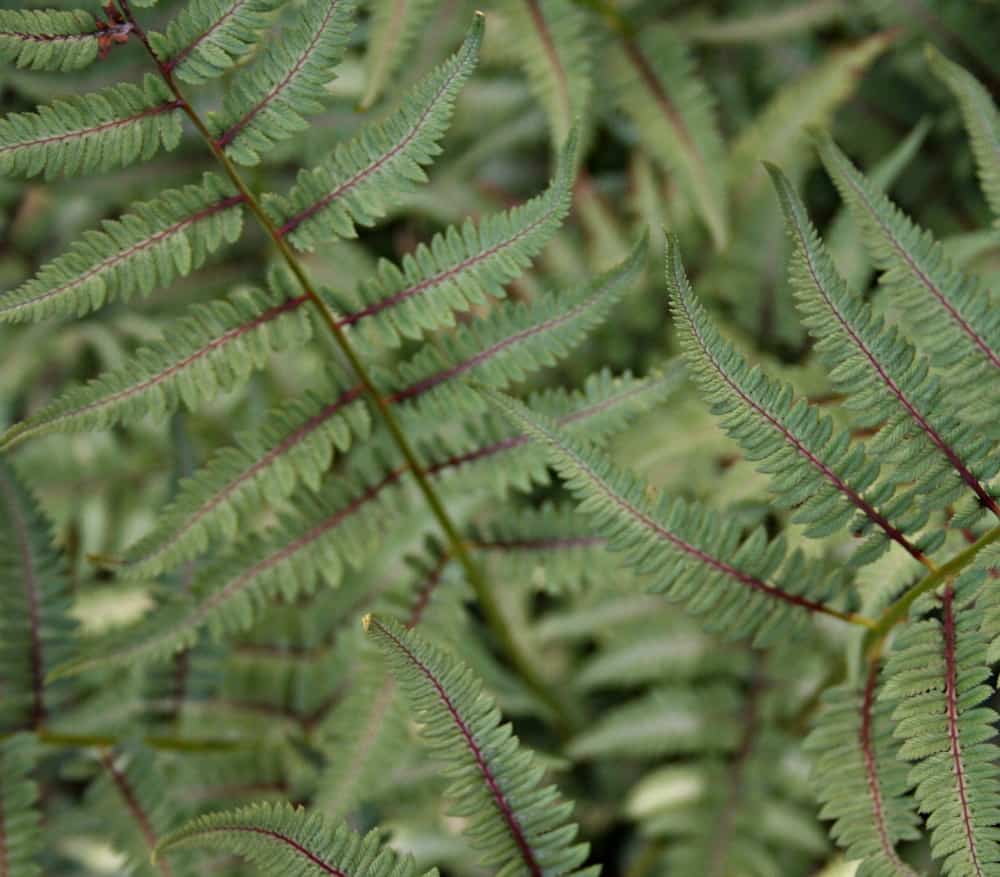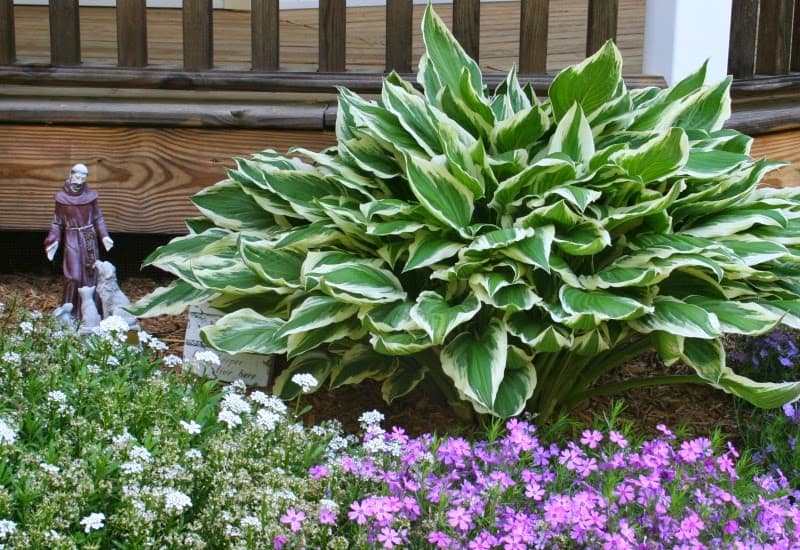Choosing plants for your shade garden starts by understanding how to select plants that will thrive in your yard. Many homeowners lament the fact that deep shade prevents them from planting a lush garden. Nothing could be further from the truth!
Choosing Plants for Your Shade Garden
Even if mature trees cast deep shadows or the neighbor’s shed or garage blocks full sunlight from reaching your garden area, there are many annuals and perennials that thrive in shade. Some are grown for their flowers, while others are grown for their brightly colored foliage.
Nature ensures that plants grow in nearly every environmental niche. You can find plants growing in the hottest deserts and in the coolest regions. Plants grow in blazing desert sunlight and dark, secluded niches in deep woodland forests. The key to growing a great shade garden is to seek plants adapted for shade, plants that want, need and thrive in shade, and then provide them with the environment they need to stay healthy.
The first step to growing great plants in the shade is to understand the exact nature of the shade in your garden area and choose plants that thrive in shade.
Do You Really Have Garden Shade?
The first step is to check to make sure you really do have a shady garden. Do you know how much sunlight you get each day? Consider whether or not bright, full, clear sunlight falls directly on the garden area you wish to plant, and for how long.
Gardeners define shade, partial shade and sun as follows:
- Sun – a sunny area to a gardener is an area where bright sunlight falls for six or more hours per day. It should be direct, bright and full.
- Partial shade or sun – such an area has sunlight for 3 or more hours per day. Some portion of that day may be dappled sunlight.
- Shade – fewer than three hours per day of direct sunlight.
Typically, permanent structures such as garages, sheds and houses cast the deepest shade. Mature trees such as oaks and maples cast dappled shade and you can plant flowering bulbs like tulips, daffodils or crocus under them for a brief spring garden. Such bulbs thrive when sunshine reaches their leaves, and by the time they’re done flowers and preparing their food storage for next year the deciduous tree has leafed out and the area is shady again.
Impatiens, a Favorite Flower for Shade
Impatiens, also called “busy Lizzie” are a popular garden flower. They require rich, moist soil, and while they’ll tolerate some sunshine they prefer shade or partial shade. Use them for bright bursts of color. Always plant impatiens after the last frost-free date for your gardening zone. They hail from tropical regions, and frost kills them. They are annual plants, meaning you will need to plant them annually; they cannot survive northern hemisphere winters in zones 8-9 or lower.
If you shop for impatiens at the local garden center, be sure to choose the type suited for shade. New Guinea impatiens require full sunlight and are not suitable for shady areas. Regular garden impatiens are perfect for shady, moist spots, such as areas near a patio or foundation.
And note the spelling and pronunciation. Impatiens are impatiens, not impatient!

Closeup of the plants. You can see how the geranium and impatiens mingled.
Other Annuals for Shade
There are many other annual flowers that thrive in shade. Annuals are plants that grow, flower and die in one season. Typically they are tropical plants unsuited to the northern hemisphere’s cold winter temperatures. They are grown for their beautiful flowers, and reward gardeners with lush flowers all summer long.
Other annuals that thrive in shade include:
- Wax begonias: Wax begonias not only sport pretty flowers, their foliage is vibrantly colored too. Bronze, bright green and other shaded foliage enhance the white, pink or red flowers. They can tolerate some drought and heat, too.
- Mimulus: Mimulus, also called Monkey Flower, may be new to you, but it’s a great little shade flower that slightly resembles a pansy, yet with trumpet-shaded blossoms. It tolerates partial to full shade very well.
- Coleus: Grown for its brightly colored foliage, coleus adds color through vibrant patterns of bronze, brick red, lime green and other shades of green. It does flower, but the flowers are small.
Depending on how you group such flowers in the shady bed or border, you can create interesting patterns, great swathes of bright color and other interesting designs. Create groups in odd numbers for a natural look. Mass together flowers of one color to create focal points in shady areas.

Perennials for Shade Gardens
Perennials are plants that return each year from their rootstock. They may die back to the ground after the first frost of the season, but they return and grow for many years. There are many perennials suitable for shady spots, depending upon your soil conditions and gardening zone.
- Astilbe: Astilbe is a favorite perennial for partial to full shade. It grows to about 1-2 feet tall and sports bright green leaves and large plumes of flowers. Flower colors include white, pink and shades of purple.
- Coral Bells (Heuchera): Coral Bells provide gorgeous colored foliage and tall, thin stems with nodding bell-like flowers on the ends. Foliage ranges from deep bronze-purple to green, and flower colors are white to red.
- Hosta: Hosta loves moist shade and thrives in the shade garden. Foliage includes bright greens, blue-green shades and striped patterns of white and green. Tall, nodding stems of white or purple flowers adorn the plants. If given the right conditions, many grow to enormous sizes and may require division after a few years.
- Ferns: Ferns love shady, moist areas. Imagine a forest floor and you have the ideal location for ferns. Although they do not flower, like other shade plants they sport lovely colored foliage. Many have delicate, lace-like leaves, and some have shaded patterns of color.
Depending on your garden location and soil, choose one or more of these perennial plants. Moist, shady spots are easier for the gardener than dry shade. Many plants thrive under moist shade conditions including ferns and hosta.
Shrubs may also be added to partially shady and northern-facing shaded areas. Most shrubs do just fine in such gardens. Shrubs such as azaleas grow naturally under the canopy of trees in the forest, and most grow readily in similar conditions created by mature shade trees or even a solid object such as a house.
Plant Spring Bulbs Under Mature Trees
Many people wonder which flowers they can plant under the canopy of mature shade trees such as oaks and maples. During the early spring, such areas are in full sunlight, but once the trees leaf out, the area turns to dappled partial shade or dense shade. Such areas are ideal for spring bulbs. Plant bulbs that increase in number each year such as crocus and daffodils. Do not disturb them after flowering, but let them die back gently. Mow the area only after the leaves on the spring flowering bulbs turn brown.
Some ideas for spring flowering bulbs to plant under mature shade trees include:
- Crocus
- Muscari (Grape Hyacinth)
- Daffodils
- Tulips
Among the bulbs listed above, tulips last only a few years. Look for cottage tulips and Darwin hybrids for the hardiest types.
Many Choices for Shady Spots
As you can see, there are many choices for shady gardens. Experiment with various plants and plant combinations. Visit your local garden center and become familiar with the plants sold there. Garden center managers choose plants for local shops based on what they believe grows well in your gardening zone or climate, so if you are a newcomer to gardening, you’ll have the best chance of success by buying plants locally. Once you get the hang of gardening and choosing shade gardening plants, you can expand your garden to include rare and unusual varieties purchased from the many mail order garden catalogs and websites selling plants. A good plant encyclopedia and books for inspiration can also help you create a wonderful shade garden. Don’t forget to add a thick layer of mulch on any garden; it not only suppresses weeds, it increases moisture retention. Happy gardening!





